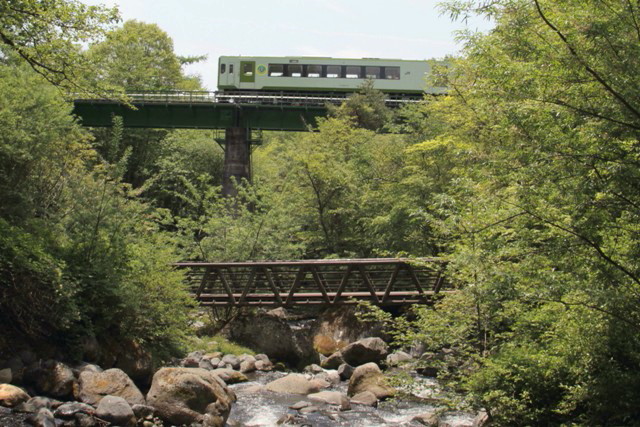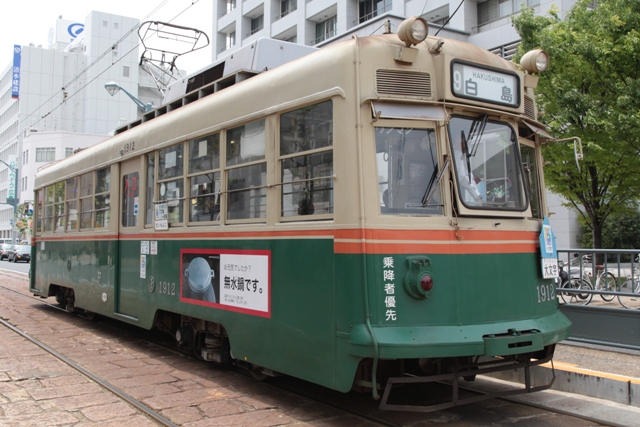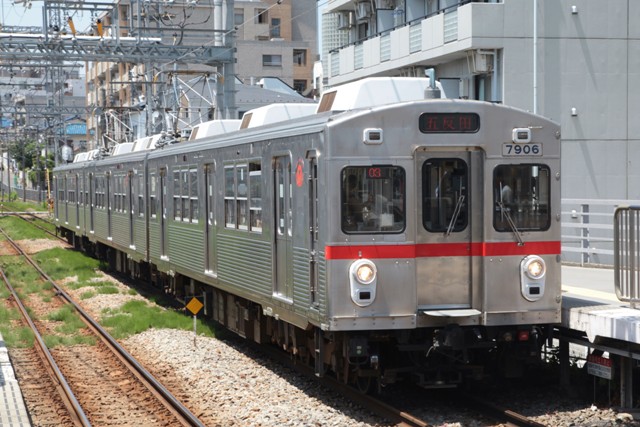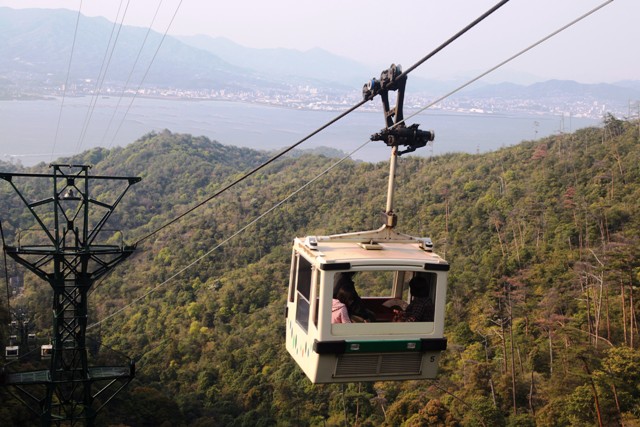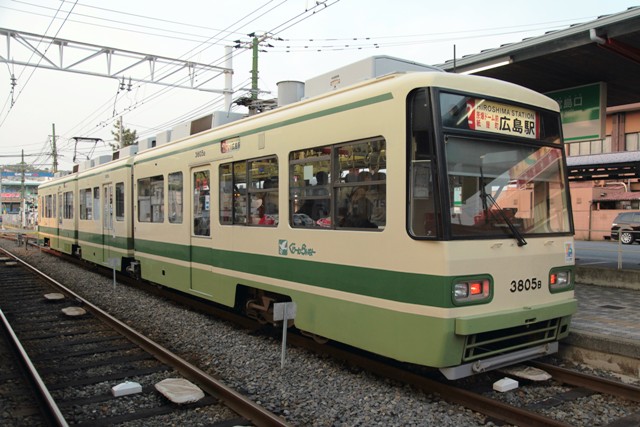
Displaying "School Excursion" on the front, the EMU 183 series stands at Shinjuku Station
The spring tourist season still continues in Japan. JR trains busily transport groups such as students on school excursions every day. On platform number eleven in Shinjuku Station, I see a special train for school excursions every morning around 7 o'clock.
This week, the EMU JR East 183 series is coming to Shinjuku, instead of the 485 series "New Nanohana", which was operated last week (see my blog on May 24th, 2013). The 183 series is an old express train commissioned in 1974 by Japanese National Railways (JNR). It is a DC (direct current) system train manufactured by Nippon Sharyo, Kawasaki Heavy Industries, Tokyu Sharyo and Kinki Sharyo. The specification is rather old; but several sets are still operated in the Tokyo metropolitan area.
The train in the top photo was specially-manufactured for tracks in snowy regions such as the Joetsu Line. For that purpose, special snow-proofing and cold-proofing for the body and special bogies are used. The high cockpit with a bonnet is a distinctive feature of this train. It is a typical design of the so-called "JNR style" express train from the 1960's to the 1970's... a very nostalgic design for me.
Displaying "School Excursion" on the front of the train, the EMU 183 series leaves Shinjuku Station at 7.02 every morning with plenty of junior high school students. The old train serves boys and girls who will bear the future world.
It will be the final mission for the old JNR express.
This week, the EMU JR East 183 series is coming to Shinjuku, instead of the 485 series "New Nanohana", which was operated last week (see my blog on May 24th, 2013). The 183 series is an old express train commissioned in 1974 by Japanese National Railways (JNR). It is a DC (direct current) system train manufactured by Nippon Sharyo, Kawasaki Heavy Industries, Tokyu Sharyo and Kinki Sharyo. The specification is rather old; but several sets are still operated in the Tokyo metropolitan area.
The train in the top photo was specially-manufactured for tracks in snowy regions such as the Joetsu Line. For that purpose, special snow-proofing and cold-proofing for the body and special bogies are used. The high cockpit with a bonnet is a distinctive feature of this train. It is a typical design of the so-called "JNR style" express train from the 1960's to the 1970's... a very nostalgic design for me.
Displaying "School Excursion" on the front of the train, the EMU 183 series leaves Shinjuku Station at 7.02 every morning with plenty of junior high school students. The old train serves boys and girls who will bear the future world.
It will be the final mission for the old JNR express.

